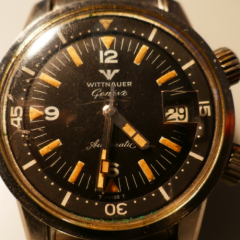-
Recently Browsing
- No registered users viewing this page.
-
Topics
-
Posts
-
I have removed the stem and open the case. The Movement can't drop out but it can be rotate Anyone has idea THANK YOU
-
Not a family member, and yes, it no way near as good, as some information got lost from original site and some information got incorrectly copied. The original site is available as iOS app here: https://apps.apple.com/fi/app/ranfft-watch-movements-archive/id6502008939
-
By Hawaiikook808 · Posted
Outstanding, Marc! Your information is really helpful and clears this up, especially given that yours were purchased as sets. Thanks, man. So, it appears I jumped the gun on this one, but I am relieved. I will say, though, that all of my reamers and concave pushers are number-stamped and appear to be of better quality. Also, the bayonets on my pushers are actually the same color as the steel. The next thing to do is restore the heads of these pushers with some polishing paper. Alex at the Watch Repair channel has a nice little video on this. I appreciate your help! Frank -
Just installed it on my iPhone (my only iOS device) and it appears to be intact and functional. I may have to go out and buy myself an ipad just for this app.
-
I have two Seitz sets, one ancient (with the 3mm anvils) and one just old (with 4mm anvils) plus a collection of spare pushers of assorted vintage. Not one of them is marked with it's size. Something which I have found very irritating when I have been using the tool and not returning pushers to their correct place in the tray every time as it means that I have to get the calipers out and measure them. These were bought as sets and collectively I have over 100 pushers so it would seem highly unlikely (if not inconceivable) that they are all cheap knock offs, especially as they are old enough to pre-date the prevalence of the Chinese knock off industry (at least as applied to watch making tools). I therefore believe them to be original Seitz parts. And there is no numbering. The shape of the bottom of the pump pushers is the same as your photo. The only thing that may not be the same is that the slotted insert (looks like a screw but is in fact a bayonet) should be brass. Yours looks the same colour as the steel but that could just be the lighting.
-










Recommended Posts
Join the conversation
You can post now and register later. If you have an account, sign in now to post with your account.
Note: Your post will require moderator approval before it will be visible.